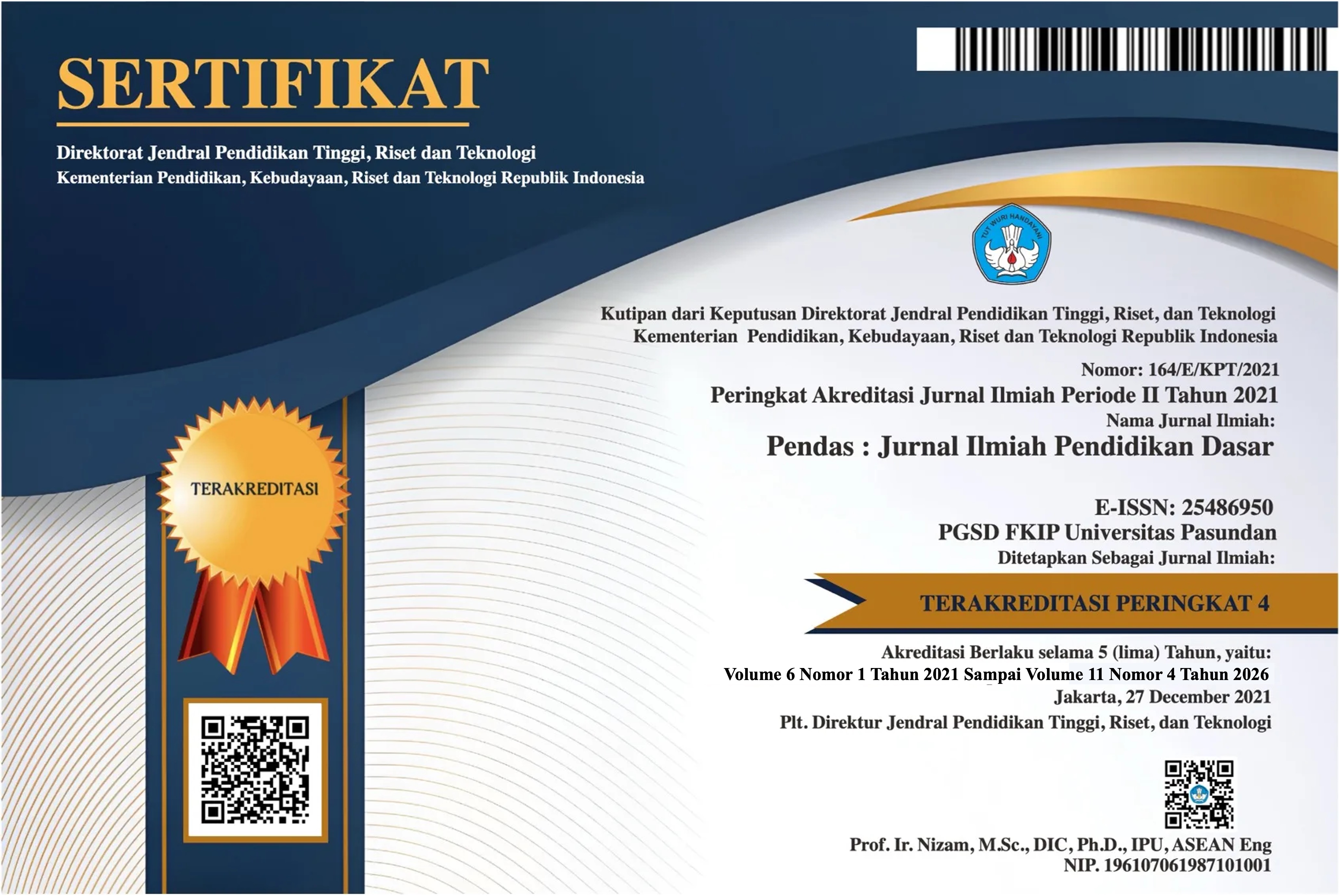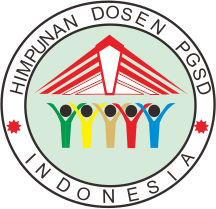ANALISIS IMPLEMENTASI PENDEKATAN STEM DALAM PEMBELAJARAN IPA DI SEKOLAH DASAR: STUDI KONTEKSTUAL DI KOTA SAMARINDA
DOI:
https://doi.org/10.23969/jp.v10i04.31500Keywords:
STEM, science learning, elementary school teachers, 21st-century skills, merdeka curriculumAbstract
STEM (Science, Technology, Engineering, and Mathematics) holds strong potential to promote 21st-century skills in elementary education, yet its implementation faces ongoing challenges. This study examines teachers’ understanding, instructional strategies, obstacles, institutional support, and the impact of STEM-based science learning in Samarinda, Indonesia. Using a descriptive qualitative-quantitative approach, data were collected from 18 teachers through questionnaires, interviews, reflections, and document analysis. Findings show that while teachers demonstrate basic understanding of STEM, especially in science and technology (mean score: 3.90), the integration of engineering and mathematics remains limited (3.60). Key barriers include limited training, insufficient time, and inadequate resources (3.23), with school support remaining general (3.00). Despite this, teachers actively seek resources and engage in informal collaboration. STEM practices reportedly increase student engagement, creativity, and critical thinking (4.10). The study highlights the need for practical training, contextual learning tools, teacher collaboration, and sustained policy support to strengthen STEM education at the elementary level.
Downloads
References
Chiriacescu, F. S., Chiriacescu, B., Grecu, A. E., Miron, C., Panisoara, I. O., & Lazar, I. M. (2023). Secondary teachers’ competencies and attitude: A mediated multigroup model based on usefulness and enjoyment to examine the differences between key dimensions of STEM teaching practice. In PLoS ONE (Vol. 18). https://doi.org/10.1371/journal.pone.0279986
English, L. D. (2017). Advancing Elementary and Middle School STEM Education. International Journal of Science and Mathematics Education, 15, 5–24. https://doi.org/10.1007/s10763-017-9802-x
Kelley, T. R., & Knowles, J. G. (2016). A conceptual framework for integrated STEM education. International Journal of STEM Education, 3(1). https://doi.org/10.1186/s40594-016-0046-z
Kementerian Pendidikan, Kebudayaan, Riset, dan Teknologi. (2022). Panduan pengembangan modul ajar Kurikulum Merdeka. https://kurikulum.kemdikbud.go.id
Margot, K. C., & Kettler, T. (2019). Teachers’ perception of STEM integration and education: a systematic literature review. International Journal of STEM Education, 6(1). https://doi.org/10.1186/s40594-018-0151-2
Miles, Ma. B., Huberman, A. M., & Saldana, J. (2014). Qualitative Data Analysis A Method Sourcebook Edition 3. In Sage Publication, Inc.
Nowell, L. S., Norris, J. M., White, D. E., & Moules, N. J. (2017). Thematic Analysis: Striving to Meet the Trustworthiness Criteria. International Journal of Qualitative Methods, 16(1), 1–13. https://doi.org/10.1177/1609406917733847
Portillo-Blanco, A., Deprez, H., De Cock, M., Guisasola, J., & Zuza, K. (2024). A Systematic Literature Review of Integrated STEM Education: Uncovering Consensus and Diversity in Principles and Characteristics. Education Sciences, 14(9), 8–10. https://doi.org/10.3390/educsci14091028
Rahman, N. A., Rosli, R., Rambely, A. sham;, & Halim, L. (2021). Mathematics Teachers’ Practices of STEM Education: A Systematic Literature Review. European Journal of Educational Research, 10(3), 1541–1559. Retrieved from https://doi.org/10.12973/eu-jer.10.3.1541
Rahmawati, L., Juandi, D., & Nurlaelah, E. (2022). Implementasi Stem Dalam Meningkatkan Kemampuan Berpikir Kritis Dan Kreatif Matematis. AKSIOMA: Jurnal Program Studi Pendidikan Matematika, 11(3), 2002. https://doi.org/10.24127/ajpm.v11i3.5490
Roehrig, G. H., Moore, T. J., Wang, H. H., & Park, M. S. (2012). Is Adding the E Enough? Investigating the Impact of K-12 Engineering Standards on the Implementation of STEM Integration. School Science and Mathematics, 112(1), 31–44. https://doi.org/10.1111/j.1949-8594.2011.00112.x
Stehle, S. M., & Peters-Burton, E. E. (2019). Developing student 21st Century skills in selected exemplary inclusive STEM high schools. International Journal of STEM Education, 6(1), 1–15. https://doi.org/10.1186/s40594-019-0192-1
Susanti, D., Prasetyo, Z. K., & Retnawati, H. (2020). Analysis of elementary school teachers’ perspectives on stem implementation. Jurnal Prima Edukasia, 8(1), 40–50. https://doi.org/10.21831/jpe.v8i1.31262
Downloads
Published
Issue
Section
License
Copyright (c) 2025 Pendas : Jurnal Ilmiah Pendidikan Dasar

This work is licensed under a Creative Commons Attribution 4.0 International License.


















